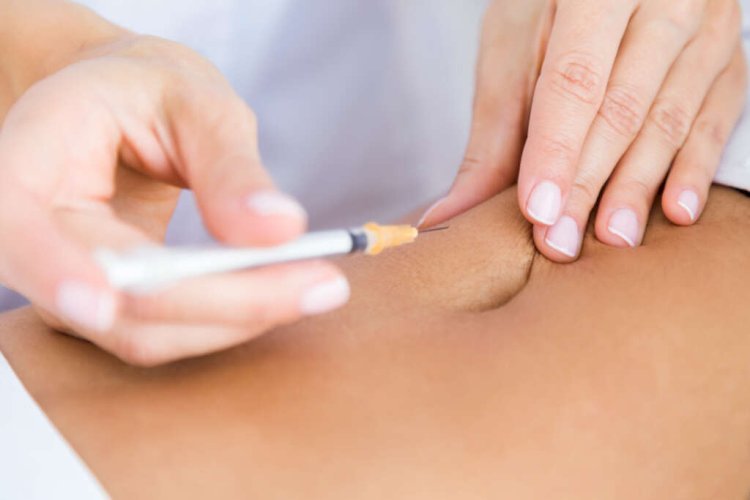How IVF Really Works: A Simple Breakdown

In-vitro fertilization (IVF) is one of the most well-known and effective treatments for infertility. But while many people have heard of IVF, not everyone understands how it actually works. This article breaks down the IVF process in a simple, step-by-step way — so whether you're considering treatment, supporting a loved one, or just curious, you'll walk away with a clear understanding of what IVF really involves.
What is IVF?
IVF stands for in-vitro fertilization, which literally means "fertilization in glass." In this process, an egg is combined with sperm outside the body — typically in a lab dish — to create an embryo. This embryo is then transferred back into the woman’s uterus with the hope that it will implant and result in a successful pregnancy.
IVF is used to treat a wide range of infertility issues, including:
-
Blocked or damaged fallopian tubes
-
Male factor infertility (low sperm count or motility)
-
Ovulation disorders
-
Endometriosis
-
Unexplained infertility
-
Age-related fertility decline
Step-by-Step: How IVF Really Works
Let’s walk through the full IVF process in a clear, understandable way.
1. Ovarian Stimulation (Hormone Injections)
In a natural cycle, a woman’s ovaries typically release one egg per month. IVF requires multiple mature eggs to increase the chances of success. To achieve this, the doctor prescribes fertility medications (hormone injections) that stimulate the ovaries to produce several eggs at once.
-
This phase lasts about 8–14 days.
-
You’ll undergo regular ultrasounds and blood tests to monitor follicle growth.
-
The goal is to produce 8–15 healthy eggs, though this can vary based on age and response.
2. Egg Retrieval (Minor Procedure)
Once the follicles are mature, a "trigger shot" is given to finalize egg development. About 34–36 hours later, the eggs are collected in a procedure called egg retrieval.
-
It’s usually done under sedation or anesthesia, so there’s no pain.
-
A thin needle is inserted through the vaginal wall, guided by ultrasound, to retrieve the eggs.
-
The procedure takes 20–30 minutes, and you can go home the same day.
3. Sperm Collection
At the same time, the male partner (or sperm donor) provides a sperm sample. The healthiest, most active sperm are selected using special techniques in the lab. In some cases of male infertility, sperm may be surgically retrieved from the testicles using methods like TESA or PESA.
4. Fertilization in the Lab
Now comes the actual in-vitro fertilization step — where science meets nature.
-
The retrieved eggs and sperm are combined in a petri dish in a carefully controlled lab environment.
-
In some cases, the doctor may use ICSI (Intracytoplasmic Sperm Injection), where a single sperm is injected directly into the egg — useful when sperm count or quality is low.
-
After 16–20 hours, the lab checks to see how many eggs have successfully fertilized.
5. Embryo Development
The fertilized eggs (now called embryos) are monitored in the lab over the next 3–5 days. During this time:
-
Embryos grow and divide into multiple cells.
-
The embryologist watches their development closely.
-
By Day 5, some embryos reach the blastocyst stage, which has a higher chance of successful implantation.
If you're doing PGT (Preimplantation Genetic Testing), this is the stage when cells are biopsied to check for genetic abnormalities.
6. Embryo Transfer
This is a quick and simple procedure that feels a bit like a Pap smear.
-
One healthy embryo (sometimes two) is selected and gently inserted into the uterus using a thin catheter.
-
No anesthesia is required, and the process takes just 5–10 minutes.
-
You may rest for a short while before going home.
This is the moment many patients consider the "real start" of their potential pregnancy.
7. The Two-Week Wait
After the transfer, you’ll begin taking hormonal medications (like progesterone) to support implantation.
Then comes the hardest part emotionally: waiting.
-
A pregnancy test is done about 10–14 days after the transfer.
-
This test measures the beta-hCG hormone in your blood, which indicates pregnancy.
-
If the test is positive, it’s followed by an early ultrasound to confirm the pregnancy and check the heartbeat.
Success Rates of IVF
IVF success rates vary based on several factors:
-
Age of the woman (success declines with age, especially after 35)
-
Embryo quality
-
Cause of infertility
-
Lifestyle and overall health
On average:
-
Women under 35 have a 40–50% success rate per cycle
-
Women over 40 have 10–15% success per cycle
Using donor eggs or advanced techniques can significantly boost these chances.
Risks and Considerations
IVF is generally safe, but like any medical procedure, it comes with some risks:
-
Ovarian Hyperstimulation Syndrome (OHSS): Over-response to fertility drugs
-
Multiple pregnancies (especially if more than one embryo is transferred)
-
Emotional and financial stress
-
Minor side effects like bloating, cramping, or mood changes from medications
It’s important to have open discussions with your fertility specialist about what to expect.
Is IVF Right for You?
IVF can be life-changing, but it’s not the first step for everyone. It’s often recommended when:
-
Less invasive treatments (like IUI or ovulation induction) have failed
-
The cause of infertility is severe or unexplained
-
Time is limited due to age or medical conditions
Your fertility doctor will assess your medical history, diagnostic tests, and goals to create a personalized plan.
Final Thoughts
Understanding how IVF really works can help reduce fear and confusion. Though the process may seem overwhelming at first, it’s just a series of carefully timed steps — each designed to help you achieve the dream of parenthood.
With the right medical team, emotional support, and clear expectations, IVF can offer hope and a path forward to thousands of couples struggling with infertility.
If you or someone you know is considering IVF, take time to research, ask questions, and find a trusted IVF center to guide the journey
What's Your Reaction?














